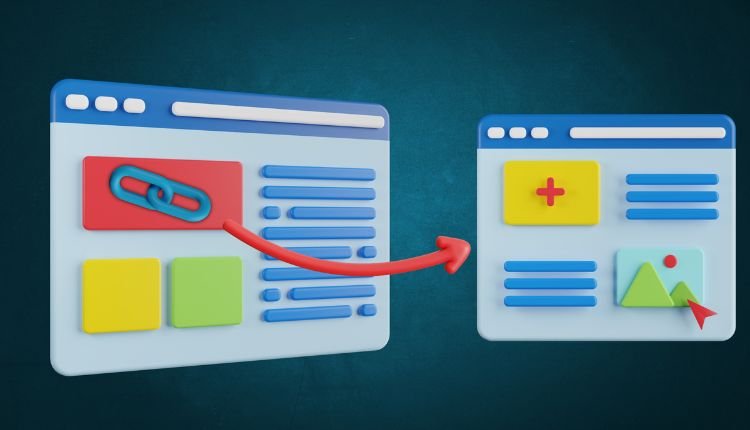Backlinks have long been a cornerstone of SEO, acting as digital endorsements that signal a website’s credibility to search engines. However, in today’s rapidly evolving search landscape, mastering backlink tracking and analysis has become more critical than ever. With Google’s AI-driven algorithms now prioritizing context, relevance, and link quality over sheer volume, brands that fail to monitor and refine their backlink profiles risk losing visibility.
In recent updates, Google’s SpamBrain and Link Spam Algorithm have become more sophisticated in detecting manipulative or low-quality backlinks. This means that simply accumulating links is no longer enough—businesses must focus on high-authority, contextually relevant backlinks while eliminating toxic links that could trigger penalties. Effective backlink tracking allows SEO professionals to safeguard their rankings, identify valuable link-building opportunities, and maintain a clean, authoritative link profile.
This guide will walk you through advanced strategies for mastering backlink tracking and analysis, covering cutting-edge tools, AI-powered insights, and competitor research techniques. By the end, you’ll have a clear roadmap to optimize your backlink profile, enhance your domain authority, and stay ahead of Google’s evolving search algorithms.
Understanding Backlinks: Beyond the Basics
Backlinks are one of the most influential ranking factors in SEO, serving as a signal of trust, authority, and credibility. However, not all backlinks hold the same weight—some can propel your site to the top of search results, while others can cause ranking penalties. Understanding the different types of backlinks and how search engines evaluate them is crucial for mastering backlink tracking and analysis effectively.
What Are Backlinks?
Definition & Role in SEO
Backlinks, also known as inbound links or external links, are hyperlinks from one website to another. These links act as votes of confidence, signaling to search engines that the linked website is relevant, valuable, and authoritative. The more high-quality backlinks a site has, the more likely it is to rank higher in search results.
Types of Backlinks
- Dofollow vs. Nofollow Links:
- Dofollow links pass link equity (PageRank), helping improve search rankings.
- Nofollow links tell search engines not to transfer link authority, though they can still drive referral traffic.
- UGC & Sponsored Links:
- UGC (User-Generated Content) tags indicate links from forums, blog comments, or user-submitted content.
- Sponsored links label paid backlinks to comply with Google’s link policies and avoid manipulation penalties.
The Role of Backlinks in Modern SEO
Quality vs. Quantity: The Shift Toward High-Quality Links
In the past, mass link building was a common tactic, but Google now prioritizes relevance and authority over sheer numbers. A single authoritative backlink from a trusted site (e.g., Forbes, HubSpot) carries more weight than dozens of low-quality links from unknown sources.
AI’s Role in Link Valuation
With advancements in Google’s AI-driven algorithms like RankBrain and SpamBrain, search engines now evaluate backlinks based on:
- Contextual relevance rather than keyword-matching alone.
- Anchor text diversity to detect unnatural link-building patterns.
- Historical trust signals from established domains.
By understanding these principles, businesses can focus on earning backlinks naturally instead of chasing outdated strategies.
Advanced Backlink Tracking Techniques
Backlink tracking is no longer just about counting the number of links pointing to your site—it’s about understanding their quality, context, and long-term impact on rankings. Google’s AI-powered algorithms, including SpamBrain and RankBrain, evaluate backlinks based on relevance, authority, and trustworthiness. To stay ahead, businesses need advanced tools and real-time monitoring strategies to track, analyze, and optimize their backlink profiles effectively.
Utilizing Cutting-Edge Tools
AI-Powered Backlink Analysis Platforms
Manually tracking backlinks is inefficient, especially as search engines continuously refine their link evaluation criteria. Advanced AI-powered SEO tools simplify this process by providing comprehensive backlink insights, historical data, and predictive analytics.
1. Ahrefs – Industry-Leading Backlink Explorer
- Ahrefs has one of the largest link databases, updated every 15 minutes.
- Offers Domain Rating (DR) and URL Rating (UR) to measure backlink strength.
- Tracks lost and newly acquired backlinks in real time.
2. SEMrush – Comprehensive Backlink Audit Tool
- Detects toxic backlinks that may lead to Google penalties.
- Identifies gaps in competitor backlinks, helping uncover new linking opportunities.
- Provides historical link-building trends, making it easy to analyze past link performance.
3. Majestic – Focused on Link Trustworthiness
- Uses Trust Flow and Citation Flow metrics to assess link quality.
- Analyzes link neighborhoods, ensuring backlinks come from reputable sources.
- Ideal for checking the authority of referring domains before reaching out for backlinks.
Each of these tools provides unique insights into a website’s backlink profile, enabling SEO professionals to track and manage their link-building efforts with precision.
Using Google Search Console to Track Backlinks
While paid tools offer in-depth analytics, Google Search Console (GSC) remains an essential free tool for tracking backlinks.
Key Features:
- See who links to your site: Lists referring domains and their linking pages.
- Identify top-linked content: Helps understand which pages attract the most backlinks.
- Find toxic links: Flags low-quality or irrelevant backlinks that could harm rankings.
- Monitor lost links: Identifies backlinks that disappear over time, allowing site owners to take action.
By combining Google Search Console with premium SEO tools, businesses can ensure no critical backlink changes go unnoticed.
Real-Time Monitoring and Alerts

In a dynamic SEO environment, backlinks can be gained or lost overnight. Setting up automated alerts ensures that businesses can react immediately to backlink fluctuations, preventing ranking drops or SEO attacks.
Setting Up Automated Alerts
Most top-tier SEO platforms provide email notifications for backlink changes. Here’s how to configure alerts for new/lost backlinks using various tools:
1. Ahrefs Alerts
- Navigate to Alerts > Backlinks and set notifications for:
- New backlinks acquired
- Lost backlinks
- Mentions without a link (potential link opportunities)
2. SEMrush Backlink Audit Alerts
- Enable “Lost Backlink” alerts to track any links that suddenly disappear.
- Set up Toxic Score monitoring to detect suspicious backlinks that might be part of a negative SEO attack.
3. Google Alerts (for Brand Mentions)
- Helps track brand or keyword mentions across the web.
- Can uncover unlinked mentions, allowing businesses to reach out and request backlinks.
Interpreting Real-Time Data for SEO Advantage
Simply tracking backlinks isn’t enough—understanding what the data means and taking action quickly is where businesses gain a competitive edge.
1. Responding to Lost Backlinks
- If a valuable backlink disappears, check if:
- The referring page was deleted or redirected.
- The site owner manually removed the link (reach out to reestablish it).
2. Detecting Negative SEO Attacks
- Sudden spikes in spammy backlinks may indicate a malicious attempt to harm rankings.
- Use Google’s Disavow Tool to remove toxic links before they affect SEO performance.
3. Analyzing Anchor Text Fluctuations
- If an unnatural pattern of anchor text (e.g., excessive exact-match keywords) is detected, Google may flag it as manipulative link-building.
- Maintaining a diverse anchor text profile ensures safe, organic link growth.
By leveraging cutting-edge technology and real-time tracking, businesses can maintain a strong, high-authority backlink profile, keeping them ahead of Google’s evolving ranking algorithms.
Comprehensive Backlink Profile Analysis
A strong backlink profile is one of the most important ranking signals in SEO. However, not all backlinks are beneficial—some boost authority, while others can lead to penalties. To maintain a high-quality link profile, it’s essential to evaluate backlinks based on domain authority, relevance, anchor text distribution, and toxicity. This section explores how to assess backlink quality, remove harmful links, and optimize anchor text for long-term SEO success.
Assessing Backlink Quality
Domain Authority & Relevance
Not all backlinks contribute equally to search rankings. Google prioritizes links from authoritative and relevant domains over those from unrelated or low-quality sources.
How to Evaluate the Credibility of Linking Domains:
- Check Domain Authority (DA) and Page Authority (PA): High DA sites (e.g., Forbes, HubSpot) pass more link equity than lesser-known domains.
- Assess Topical Relevance: A backlink from a trusted site within your niche carries more weight than a random, unrelated link.
- Analyze Traffic Metrics: Sites with high organic traffic provide better SEO benefits than low-traffic domains.
Why High-DA Links Are More Valuable Than Low-Quality Ones:
- High-DA backlinks enhance credibility and boost keyword rankings.
- Low-quality links from spammy or irrelevant sites can decrease trust and trigger Google penalties.
By focusing on high-authority, niche-relevant backlinks, businesses can build a sustainable and penalty-free link profile. According to Moz, backlinks from authoritative domains carry significantly more SEO value, helping boost rankings more effectively than links from low-quality sites (Moz).
Identifying Toxic Backlinks
Not all links are beneficial—some can harm rankings and lead to manual penalties. Regular backlink audits help detect and eliminate toxic backlinks before they damage SEO performance.
Google’s Link Spam Policy: What Types of Backlinks Violate Guidelines
- Paid Links & Link Exchanges: Buying or exchanging links for SEO purposes is against Google’s guidelines.
- PBNs (Private Blog Networks): Links from manipulative networks can trigger ranking penalties.
- Spammy Forum & Blog Comments: Links from low-quality, user-generated content can dilute link authority.
- Hacked or Injected Links: Backlinks from compromised sites may lead to security warnings.
Google emphasizes that manipulative link-building practices, including paid links and excessive reciprocal linking, may result in penalties (Google).
How to Remove or Disavow Toxic Links
Using Google’s Disavow Tool Effectively
- Download your backlink report from Google Search Console.
- Identify harmful domains and create a disavow file.
- Submit the file through Google’s Disavow Tool to prevent negative SEO impact.
Contacting Webmasters to Remove Harmful Backlinks
- Reach out via email with a polite removal request.
- If the site owner is unresponsive, proceed with disavowal.
A clean backlink profile ensures that only high-quality, relevant links contribute to SEO rankings.
Analyzing Anchor Text Diversity
Google uses anchor text signals to understand the context of backlinks. However, over-optimized or unnatural anchor text can trigger algorithmic penalties (Penguin updates).
Best Practices for Anchor Text Optimization
- Maintain a natural balance between branded, generic, and keyword-rich anchors.
- Avoid excessive exact-match anchors, as they can appear manipulative.
- Diversify anchor sources across guest posts, press releases, and citations.
Avoiding Over-Optimization Risks (Penguin Algorithm Updates)
- Overuse of exact-match anchor text (e.g., “best SEO agency”) signals manipulative link-building.
- Unnatural anchor text distribution can result in manual actions from Google.
- Use a mix of branded and contextual anchors for a natural backlink profile.
By following these best practices, businesses can improve link relevance while avoiding search penalties.
Leveraging Competitor Backlink Insights

Competitor backlink analysis is one of the most effective strategies for discovering link opportunities and outperforming competitors in search rankings. By analyzing where top-ranking competitors get their backlinks, businesses can replicate successful strategies and gain a competitive edge.
Competitor Backlink Profiling
Identifying Where Competitors Get Links
To reverse-engineer a competitor’s link-building strategy, SEO professionals use tools like:
- Ahrefs – Identifies new and lost backlinks of competitors.
- SEMrush – Compares multiple competitor backlink profiles.
- Majestic – Evaluates Trust Flow & Citation Flow of referring domains.
How to Find Competitor Backlinks:
- Enter a competitor’s domain into a backlink analysis tool.
- Sort backlinks by authority and relevance.
- Identify top-linked pages to see which content attracts the most backlinks.
Benchmarking Link Quality
- Compare referring domains: Are competitors getting links from authoritative websites that you aren’t?
- Assess anchor text distribution: Are their backlinks using natural, diverse anchors?
- Analyze link velocity: How fast are they acquiring backlinks compared to your site?
A well-structured competitor analysis helps businesses spot gaps in their own backlink strategy.
Strategies to Acquire Similar Backlinks
Outreach & Relationship Building
One of the best ways to earn backlinks is by reaching out to websites that already link to competitors.
Effective Outreach Steps:
- Identify backlink prospects – Find sites linking to your competitors.
- Personalize outreach emails – Mention why your content is a valuable alternative.
- Offer value – Provide data, case studies, or a guest post to encourage linking.
Building relationships with niche-relevant bloggers, journalists, and industry influencers improves long-term link acquisition success.
Creating Linkable Assets
High-value content is more likely to attract organic backlinks. The most successful formats include:
1. Data-Driven Content
- Original research, case studies, and industry reports get cited frequently.
- Example: “SEO Trends Report 2024” with proprietary data.
2. Infographics & Visual Content
- Engaging visuals make complex data easier to understand and share.
- Example: An infographic on “The Evolution of Google’s Ranking Algorithms”.
3. Ultimate Guides & Expert Roundups
- In-depth, comprehensive content naturally earns backlinks.
- Example: “The Ultimate Guide to Advanced Link Building” featuring expert insights.
By creating linkable assets, businesses increase their chances of earning high-authority backlinks organically.
Case Studies: Successful Backlink Strategies
Not all backlinks are created equal, and the most effective link-building strategies rely on proven, data-backed methods. Brands that focus on high-quality content and strategic outreach often outperform competitors in search rankings. In this section, we explore two case studies that showcase successful backlink acquisition techniques: The Skyscraper Technique and Digital PR Campaigns.
Case Study 1 – The Skyscraper Technique
Overview: Creating Superior Content Based on High-Performing Articles
The Skyscraper Technique, developed by Brian Dean of Backlinko, is a content-driven approach to earning backlinks. It involves:
- Identifying top-ranking, high-backlink content within your industry.
- Creating a superior version with updated insights, better visuals, and more comprehensive information.
- Outreaching to websites linking to the original content, offering them a better resource to link to.
Results: How Brands Have Successfully Used This Method
- HubSpot used this strategy by updating old content with fresh data, increasing organic backlinks by 200% in six months.
- Ahrefs revamped an outdated keyword research guide, leading to dozens of new backlinks from high-authority SEO blogs.
By continuously improving and promoting top-tier content, brands attract natural backlinks from authoritative sources, boosting SEO rankings.
Case Study 2 – Digital PR Campaigns
Overview: How Media Mentions & Press Releases Generate High-Authority Backlinks
Digital PR campaigns leverage newsworthy content to earn backlinks from major media outlets, blogs, and journalists. Companies use data studies, expert opinions, or viral campaigns to attract media coverage.
Results: A Newsworthy Campaign That Secured Hundreds of Backlinks
- Airbnb launched a unique city-specific travel insights report, gaining hundreds of backlinks from sites like Forbes and The Guardian.
- SEMrush conducted a study on Google’s ranking factors, which was widely cited by SEO blogs and news outlets, earning over 500 backlinks.
By incorporating data-driven insights and press outreach, brands can attract organic, high-quality backlinks that elevate domain authority.
Future Trends in Backlink Analysis
The landscape of backlink analysis is evolving rapidly, with AI, machine learning, and semantic search reshaping how search engines evaluate links. To stay ahead, businesses must adapt to these emerging trends.
AI and Machine Learning in SEO
Predictive Analytics for Link Building
- AI-driven tools (like SEMrush and Ahrefs) now predict which backlink opportunities provide the highest SEO value.
- Machine learning models analyze historical backlink patterns, helping businesses focus on high-impact link acquisition.
Automating Backlink Audits
- AI-based tools streamline backlink tracking by automatically detecting toxic links and suggesting disavow actions.
- Platforms like Google’s SpamBrain continuously refine link evaluation, reducing reliance on manual audits.
The Rise of Semantic Search
Impact on Backlink Valuation
- Google now prioritizes context over direct links, evaluating how backlinks fit within semantic search and topic authority.
- High-value backlinks must be contextually relevant rather than just keyword-optimized.
As search engines become smarter, brands must focus on content depth, topic relevance, and contextual backlinks for sustained SEO growth.
Conclusion: Key Takeaways & Next Steps
In the evolving landscape of SEO, backlink tracking has become indispensable. High-quality, relevant backlinks not only enhance your site’s authority but also significantly influence search engine rankings. Regular monitoring ensures that your backlink profile remains robust and free from harmful links that could jeopardize your site’s credibility.
Actionable Insights for Businesses
✅ Monitor backlinks regularly to detect gained or lost links.
✅ Use AI-driven tools to automate backlink analysis and competitive insights.
✅ Focus on quality over quantity, prioritizing high-authority, relevant backlinks.
By implementing these advanced backlink tracking and analysis strategies, you position your website for improved search rankings and sustained organic growth. Stay proactive, adapt to emerging SEO trends, and prioritize the health of your backlink profile to achieve long-term success.
FAQs
What is the difference between backlink monitoring and a backlink checker?
Backlink monitoring involves tracking the status and quality of your existing backlinks over time, ensuring they remain active and beneficial. A backlink checker, on the other hand, is used to discover and analyze the backlinks pointing to a specific domain or URL, which can include competitors’ sites.
How can I identify and remove toxic backlinks?
To identify toxic backlinks, use SEO tools that analyze your backlink profile for links from low-quality or spammy sites. Once identified, you can contact the webmasters to request removal or use Google’s Disavow Tool to inform search engines to ignore these harmful links.
What are the best practices for anchor text optimization?
Ensure your anchor text is diverse and contextually relevant, avoiding over-optimization with exact-match keywords. A natural anchor text profile includes a mix of branded terms, generic phrases, and relevant keywords, which helps prevent potential penalties from search engine algorithms.
How do AI and machine learning influence backlink analysis?
AI and machine learning enhance backlink analysis by providing predictive insights into link quality and potential SEO impact. These technologies can automate the detection of toxic links, assess the contextual relevance of backlinks, and offer data-driven recommendations for link-building strategies.
Why is the quality of backlinks more important than quantity?
Search engines prioritize backlinks from authoritative and relevant sites, as they are stronger indicators of a website’s credibility and trustworthiness. A few high-quality backlinks can significantly boost your SEO performance more than numerous low-quality links, which may even harm your site’s ranking.

Malik Aqeel is a seasoned SEO specialist with 3 years of experience, currently pursuing a BS in Computer Science from the Virtual University of Pakistan. He is dedicated to helping businesses improve their online visibility and shares his knowledge through his blog, Tech Marketing Café, where he covers topics on digital marketing, technology, and business.


